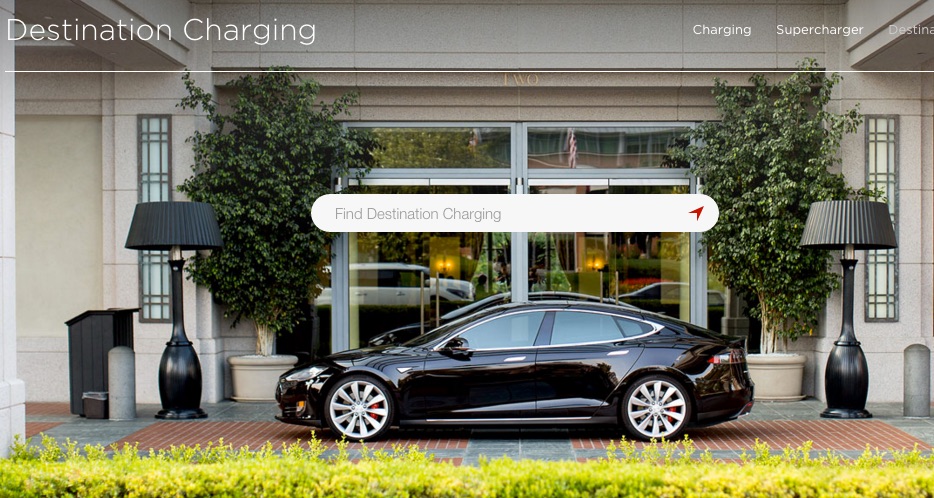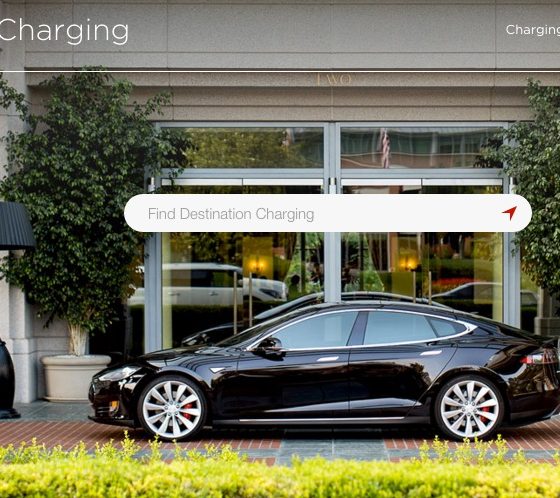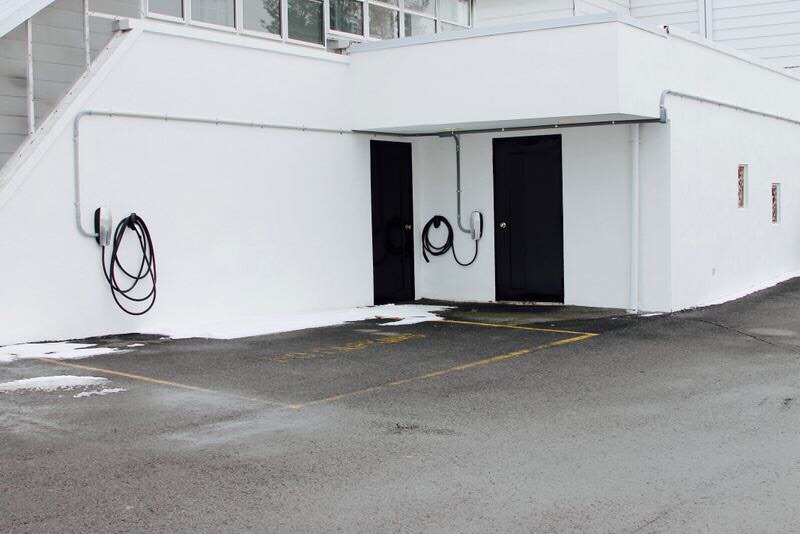

Lifestyle
Becoming a Tesla Destination Charging Participant
Last month I shared with you the story of my successful recruitment of a restaurant/brewery into the Tesla Destination Charging program. It was a story I hoped would inspire others to do the same. Some of you asked me questions about what it was like for the business and I was curious myself, so I set out to get answers and hear it from their side.
The long story short? Piece of cake!
How did this all start? Some crazy owner (me) sent an unsolicited email, informed one of the restaurant’s owners of the program and vowed to come for a visit. On Friday, November 27th, that visit occurred. After I left, Mark the owner of Breaker Brewing Company checked on the kitchen and determined he could spare a few moments to contact Tesla’s Destination Charging program and inquire. As with any small, independent business, the biggest question Mark had was how much of an investment joining the program required. His budget for such a non-essential business expense was, in essence, non-existent. Sure he knew they would be on the hook for the cost of electricity for the actual charging, but that nominal amount was not the main concern.
Pretty quickly (Monday or Tuesday of the following week) Tesla responded to Mark’s inquiry. He assumes they checked out the location using mapping software first because right from that first phone conversation, he was immediately informed his location was a good fit. He had provided the address in his first contact and already knew he had an unused parking space along a building where the chargers could be installed.
“We love technology here.”
To be honest, it didn’t take much convincing on my part to get the restaurant on board with this idea. They were really receptive from the beginning and so the rest was smooth sailing. A pair with experience in the engineering field, Mark admitted that he and his co-owner loved technology.
The main questions that he had revolved around their responsibilities. For example, how much up front costs or fees they would be on the hook for, what the program consisted of and whether or not Tesla would assist with getting adequate power to the building where he intended the chargers to be installed.
In order to answer those questions, Tesla instructed Mark to get an estimate from an electrician to run the additional power and install the chargers. Jonathan Katz, Project Manager in the Destination Charging group was Mark’s main contact. One very important thing that Mark wanted to share with me was that from Day 1, Jonathan was phenomenal to work with. His email signature contained a direct phone number which Mark was able to call with questions. Reportedly Jonathan answered every call and reaching out to him never amounted to voicemails or phone tag. He also answered every question, big or small. The same thing applied to the electrician who was hired to do the job. (Praising Tesla for communication is something I don’t see often so this really stood out to me and is a sign of their true commitment to making charging accessible.)

Destination chargers can be found across a variety of hotels, restaurants and shopping centers [Source: Tesla Motors]
The next step in the process was getting an estimate for the electrical work. Tesla had recommended two electricians that were relatively close but not in the same town. Mark asked if he could hire his own because he happened to know of one who was reliable, professional and excellent at fit and finish of his work. Tesla said that it was no problem at all and awaited the estimate. As noted above, the electrician was able to easily contact Jonathan Katz directly to have any questions answered about the process. Once the estimate came in, Mark was ready to get back to Tesla.
The quote was $2,800 for installation of two 80 amp HPWCs including upgrading the building’s service to accommodate that kind of juice. The job also included running the chargers all the way outside the building to the correct placement. When Mark informed his contact at Tesla about the estimate, they confirmed this was within their reimbursement cap so the entire thing would be covered. Breaker Brewery would not have to come out of pocket even one dollar. That made the decision to move forward extremely easy.
Breaker Brewery would not have to come out of pocket even one dollar.
The next part of the process went equally smooth. Tesla had accepted the cost (their cap, which may or may not be negotiable and may or may not be region-specific, was reported to be $3,000) and sent a congratulations email about being accepted into the program. Next Tesla mailed out the chargers, which arrived in about five business days. I am assuming that what made me think this was an ideal location for a destination charger was also noticed by Tesla and thus they accepted the location into the program without any convincing.
The amount of effort and leg work the restaurant had to do to be a part of this program was small. They were required to fill out an application, which was neither long nor complicated. It contained some basic information about their location, business and what they offer. (I’m picturing the wifi and restroom symbols you see on the navigation screen when you touch on a destination charging marker.)
Once the chargers were installed and powered up, Tesla had to be informed. At this point the one and only hiccup occurred. For one reason or another, there was a miscommunication that resulted in Tesla not realizing it was done. After some time, Mark reached out to follow up about payment to the electrician. Once Jonathan realized what had occurred, he quickly resolved the issue and sent the payment. Mark estimates that had the miscommunication not occurred, the electrician probably would have only waited 7-10 for payment after completion. It bears repeating that in the case of this installation, everything was reimbursed. The whole job fit into the reimbursement limits and the restaurant had to pay nothing.
On January 15, 2016, the chargers were powered up. That means in just 49 days (including the Christmas and New Years holidays!) Breaker Brewery went from asking about the destination charging program to having working chargers. It took 3-5 days for their location to show up on Tesla’s destination charging map. I will assume the in-navigation display took the same but did not verify it was showing until yesterday.
Within the first 10 days or so of operation, which included my post about it as well as sharing on both TMC and the Tesla Forums, three different owners called the restaurant to thank them for installing a charger. (The Tesla community doing what we do.) Thus far only one owner has actually charged but Mark hopes to see an uptick as word spreads. Interestingly enough, the chargers have become a topic of conversation for non-Tesla owning patrons of the restaurant. Every Friday and Saturday someone notices and asks about it. There is a general curiosity that I hope will have far reaching implications with Model 3 and beyond. Certainly people want to know they will be able to charge at various locations before even considering the idea of some day owning an electric vehicle. To Mark’s knowledge, no other EV drivers have attempted to charge. I asked this question because I once saw an electric Smart Car pull into a Tesla Supercharger and attempt to plug in.
Some additional questions I asked were:
- What did you have to negotiate? Nothing
- How much did you come out of pocket? Nothing
- How as finance handled? Tesla mailed the chargers and paid the electrician directly
- Was the process easy? Extremely
- What else? I emailed Nissan and GM to see if they have similar programs. No one ever responded.
- Final notes from the owner: I would recommend this to any business!

Lifestyle
Tesla Model S Plaid battles China’s 1500 hp monster Nurburgring monster, with surprising results
There is just something about Tesla’s tuning and refinement that makes raw specs seem not as game-changing.

The Tesla Model S Plaid has been around for some time. Today, it is no longer the world’s quickest four-door electric sedan, nor is it the most powerful. As per a recent video from motoring YouTube channel Carwow, however, it seems like the Model S Plaid is still more than a match for some of its newer and more powerful rivals.
The monster from China
The Xiaomi SU7 Ultra is nothing short of a monster. Just like the Model S Plaid, it features three motors. It also has 1,548 hp and 1,770 Nm of torque. It’s All Wheel Drive and weighs a hefty 2,360 kg. The vehicle, which costs just about the equivalent of £55,000, has been recorded setting an insane 7:04.957 at the Nurburgring, surpassing the previous record held by the Porsche Taycan Turbo GT.
For all intents and purposes, the Model S Plaid looked outgunned in Carwow’s test. The Model S Plaid is no slouch with its three motors that produce 1,020 hp and 1,420 Nm of torque. It’s also a bit lighter at 2,190 kg despite its larger size. However, as the Carwow host pointed out, the Model S Plaid holds a 7:25.231 record in the Nurburgring. Compared to the Xiaomi SU7 Ultra’s record, the Model S Plaid’s lap time is notably slower.
Real-world tests
As could be seen in Carwow’s drag races, however, Tesla’s tech wizardry with the Model S Plaid is still hard to beat. The two vehicles competed in nine races, and the older Model S Plaid actually beat its newer, more powerful counterpart from China several times. At one point in the race, the Xiaomi SU7 Ultra hit its power limit due to its battery’s temperature, but the Model S Plaid was still going strong.
The Model S Plaid was first teased five years ago, in September 2020 during Tesla’s Battery Day. Since then, cars like the Lucid Air Sapphire and the Xiaomi SU7 Ultra have been released, surpassing its specs. But just like the Model Y ended up being the better all-rounder compared to the BYD Sealion 7 and the MG IM6, there is just something about Tesla’s tuning and refinement that makes raw specs seem not as game-changing.
Check out Carwow’s Model S Plaid vs Xiaomi SU7 drag race video below.
Lifestyle
500-mile test proves why Tesla Model Y still humiliates rivals in Europe
On paper, the BYD Sealion 7 and MG IM6 promised standout capabilities against the Model Y.

BYD is seeing a lot of momentum in Europe, so much so that mainstream media has taken every opportunity to argue that the Chinese automaker has beaten Tesla in the region. But while BYD sales this year in Europe are rising and Tesla’s registrations remain challenged, the raw capabilities of vehicles like the Model Y are difficult to deny.
This was highlighted in a 500-mile challenge by What Car? magazine, which showed that the new Tesla Model Y is more efficient, cheaper to run, and more reliable than rivals like the BYD Sealion 7, and even the nearly 400 KW-charging MG IM6.
Range and charging promises
On paper, the BYD Sealion 7 and MG IM6 promised standout capabilities against the Model Y. The Sealion 7 had more estimated range and the IM6 promised significantly faster charging. When faced with real-world conditions, however, it was still the Model Y that proved superior.
During the 500-mile test, the BYD nearly failed to reach a charging stop, arriving with less range than its display projected, as noted in a CarUp report. MG fared better, but its charging speeds never reached its promised nearly-400 kW charging speed. Tesla’s Model Y, by comparison, managed energy calculations precisely and arrived at each stop without issue.
Tesla leads in areas that matter
Charging times from 25% to 80% showed that the MG was the fastest at 17 minutes, while Tesla and BYD were close at 28 and 29 minutes, respectively. Overall efficiency and cost told a different story, however. The Model Y consumed 19.4 kWh per 100 km, compared to 22.2 for MG and 23.9 for BYD. Over the full trip, Tesla’s charging costs totaled just £82 thanks to its supercharger network, far below BYD’s £130 and MG’s £119.
What Car? Magazine’s testers concluded that despite BYD’s rapid sales growth and the MG IM6’s seriously impressive charging speeds, Tesla remains the more compelling real-world choice. The Model Y just offers stability, efficiency, and a proven charging infrastructure through its Supercharging network. And as per the magazine’s hosts, the Model Y is even the cheapest car to own among the three that were tested.
Watch What Car? Magazine’s 500-mile test in the video below.
Lifestyle
Tesla Cybertruck slapped with world’s least intimidating ticket, and it’s pure cringe
One cannot help but cringe and feel second-hand embarrassment at the idea of a person just driving around with a stack of these babies.

A Cybertruck parked at Stanford Shopping Center in California was recently hit with what might be the most try-hard piece of paper ever slipped under a wiper blade: a “fake citation” accusing the driver of supporting a “fascist car.”
The note, shared on X by Tesla staff program manager Ryan Torres, quickly made the rounds on X, where it quickly gained attention as an example of how not to protest.
The world’s least intimidating ticket
According to the citation, the supposed “violation” was “driving a fascist car.” The remedial action? Take the bus, call an Uber, or ride a bike. The note also dubbed Elon Musk a “chainsaw-wielding Nazi billionaire.” Now, protests against Tesla and Elon Musk have become commonplace this year, but one cannot help but cringe and feel second-hand embarrassment at the idea of a person just driving around with a stack of fake anti-Tesla/Musk citations.
Torres pointed out the irony himself in his post on X. Tesla currently employs over 140,000 Americans, and SpaceX has put the U.S. firmly back at the top of space technology. As Torres put it, maybe the person behind the world’s least intimidating ticket should “read a book on innovation before vandalizing” other people’s property.
Peak performative clownery
Not to mention that the fake ticket’s logic collapses under its own weight. EVs like the Cybertruck are literally designed to reduce emissions, not “destroy the economy.” If anything, Tesla has bolstered the United States’ economy by fueling jobs in engineering, manufacturing, and clean energy. It’s not the first time a Tesla has been the target of vandalism or politically charged notes, but this one stands out for sheer cringe value.
Torres summed it up neatly: “Peak clownery.” On that point, at least, the citation earns full marks. In a way, though, perhaps cringe fake tickets are not as bad as the literal firebombs that were being thrown at Tesla stores and cars earlier this year because some critics were gleefully misinformed about Elon Musk.










